Juan Pino
LongTail-Swap: benchmarking language models' abilities on rare words
Oct 05, 2025Abstract:Children learn to speak with a low amount of data and can be taught new words on a few-shot basis, making them particularly data-efficient learners. The BabyLM challenge aims at exploring language model (LM) training in the low-data regime but uses metrics that concentrate on the head of the word distribution. Here, we introduce LongTail-Swap (LT-Swap), a benchmark that focuses on the tail of the distribution, i.e., measures the ability of LMs to learn new words with very little exposure, like infants do. LT-Swap is a pretraining corpus-specific test set of acceptable versus unacceptable sentence pairs that isolate semantic and syntactic usage of rare words. Models are evaluated in a zero-shot fashion by computing the average log probabilities over the two members of each pair. We built two such test sets associated with the 10M words and 100M words BabyLM training sets, respectively, and evaluated 16 models from the BabyLM leaderboard. Our results not only highlight the poor performance of language models on rare words but also reveal that performance differences across LM architectures are much more pronounced in the long tail than in the head. This offers new insights into which architectures are better at handling rare word generalization. We've also made the code publicly avail
XLAVS-R: Cross-Lingual Audio-Visual Speech Representation Learning for Noise-Robust Speech Perception
Mar 21, 2024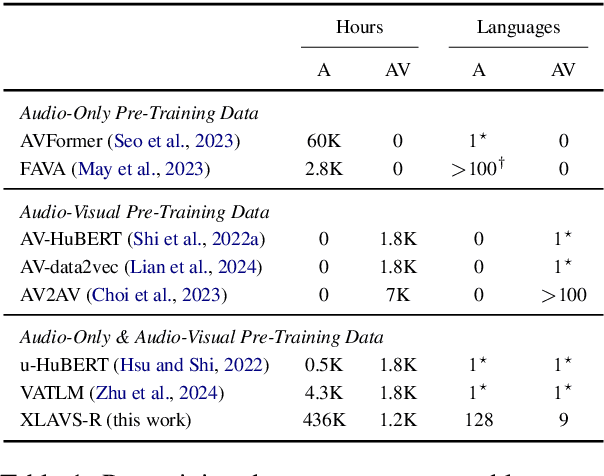
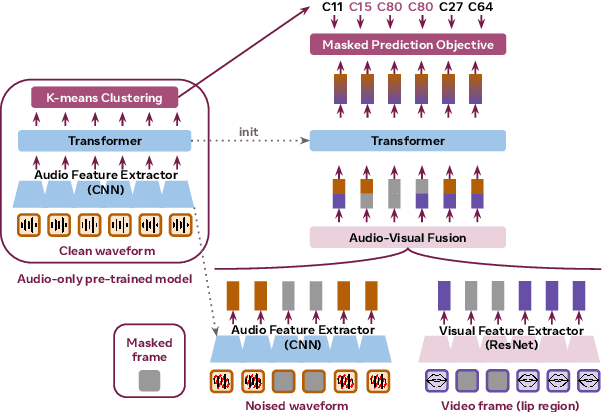
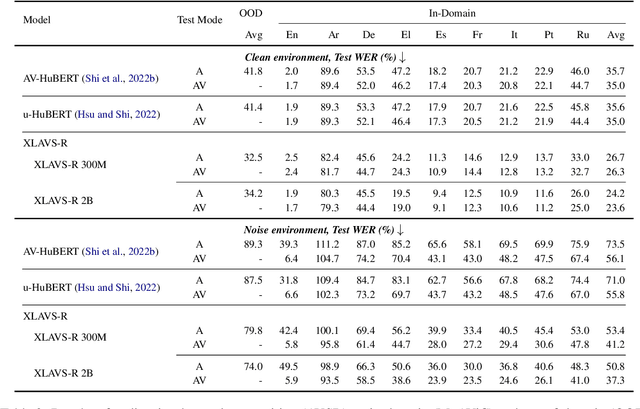
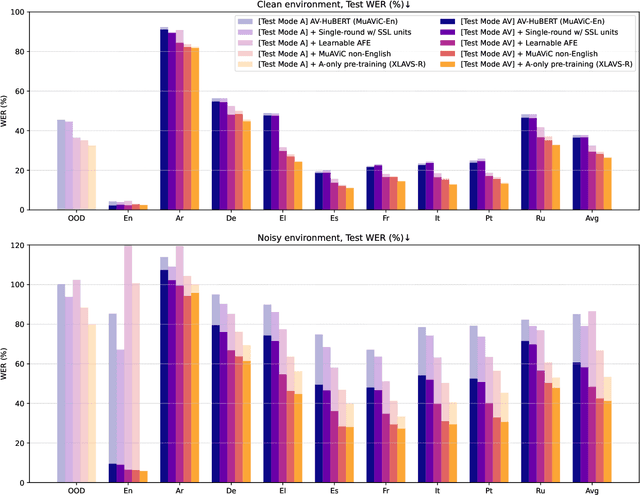
Abstract:Speech recognition and translation systems perform poorly on noisy inputs, which are frequent in realistic environments. Augmenting these systems with visual signals has the potential to improve robustness to noise. However, audio-visual (AV) data is only available in limited amounts and for fewer languages than audio-only resources. To address this gap, we present XLAVS-R, a cross-lingual audio-visual speech representation model for noise-robust speech recognition and translation in over 100 languages. It is designed to maximize the benefits of limited multilingual AV pre-training data, by building on top of audio-only multilingual pre-training and simplifying existing pre-training schemes. Extensive evaluation on the MuAViC benchmark shows the strength of XLAVS-R on downstream audio-visual speech recognition and translation tasks, where it outperforms the previous state of the art by up to 18.5% WER and 4.7 BLEU given noisy AV inputs, and enables strong zero-shot audio-visual ability with audio-only fine-tuning.
SpiRit-LM: Interleaved Spoken and Written Language Model
Feb 08, 2024Abstract:We introduce SPIRIT-LM, a foundation multimodal language model that freely mixes text and speech. Our model is based on a pretrained text language model that we extend to the speech modality by continuously training it on text and speech units. Speech and text sequences are concatenated as a single set of tokens, and trained with a word-level interleaving method using a small automatically-curated speech-text parallel corpus. SPIRIT-LM comes in two versions: a BASE version that uses speech semantic units and an EXPRESSIVE version that models expressivity using pitch and style units in addition to the semantic units. For both versions, the text is encoded with subword BPE tokens. The resulting model displays both the semantic abilities of text models and the expressive abilities of speech models. Additionally, we demonstrate that SPIRIT-LM is able to learn new tasks in a few-shot fashion across modalities (i.e. ASR, TTS, Speech Classification).
Seamless: Multilingual Expressive and Streaming Speech Translation
Dec 08, 2023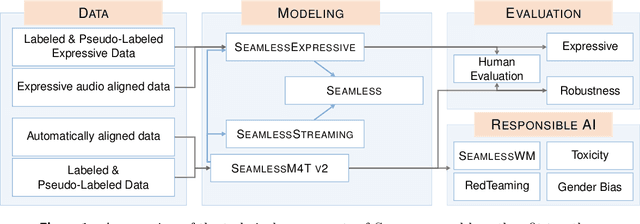
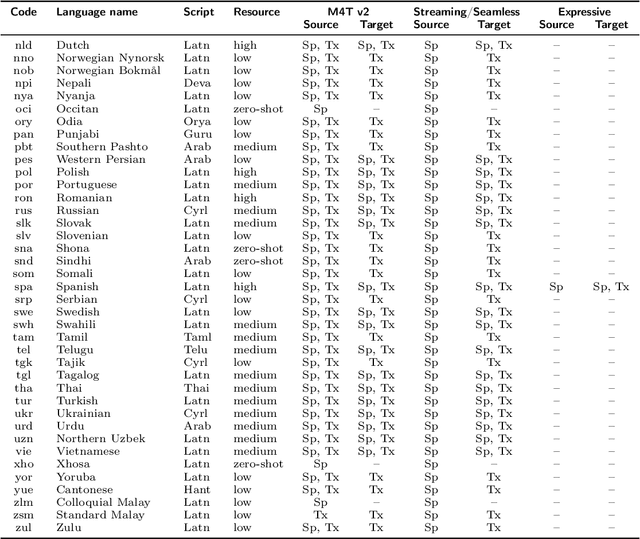

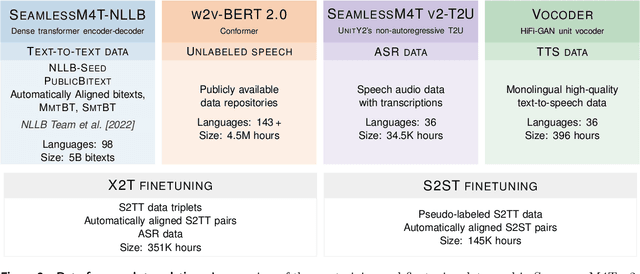
Abstract:Large-scale automatic speech translation systems today lack key features that help machine-mediated communication feel seamless when compared to human-to-human dialogue. In this work, we introduce a family of models that enable end-to-end expressive and multilingual translations in a streaming fashion. First, we contribute an improved version of the massively multilingual and multimodal SeamlessM4T model-SeamlessM4T v2. This newer model, incorporating an updated UnitY2 framework, was trained on more low-resource language data. SeamlessM4T v2 provides the foundation on which our next two models are initiated. SeamlessExpressive enables translation that preserves vocal styles and prosody. Compared to previous efforts in expressive speech research, our work addresses certain underexplored aspects of prosody, such as speech rate and pauses, while also preserving the style of one's voice. As for SeamlessStreaming, our model leverages the Efficient Monotonic Multihead Attention mechanism to generate low-latency target translations without waiting for complete source utterances. As the first of its kind, SeamlessStreaming enables simultaneous speech-to-speech/text translation for multiple source and target languages. To ensure that our models can be used safely and responsibly, we implemented the first known red-teaming effort for multimodal machine translation, a system for the detection and mitigation of added toxicity, a systematic evaluation of gender bias, and an inaudible localized watermarking mechanism designed to dampen the impact of deepfakes. Consequently, we bring major components from SeamlessExpressive and SeamlessStreaming together to form Seamless, the first publicly available system that unlocks expressive cross-lingual communication in real-time. The contributions to this work are publicly released and accessible at https://github.com/facebookresearch/seamless_communication
SeamlessM4T-Massively Multilingual & Multimodal Machine Translation
Aug 23, 2023
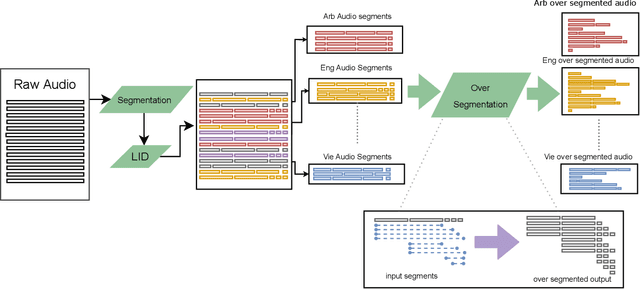
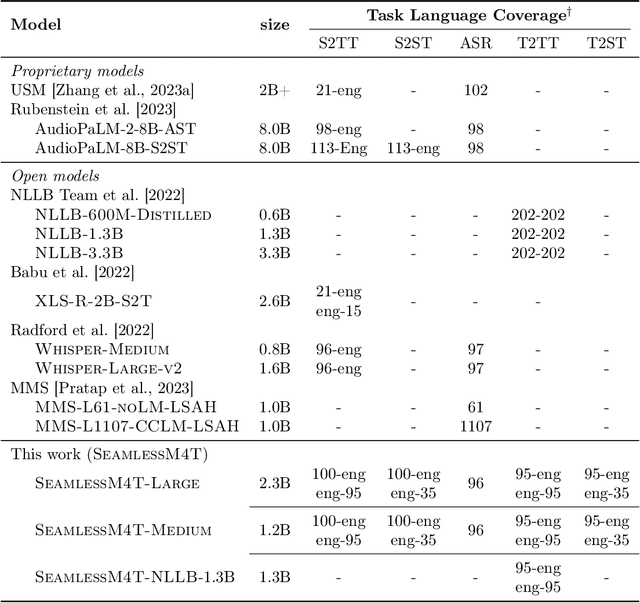
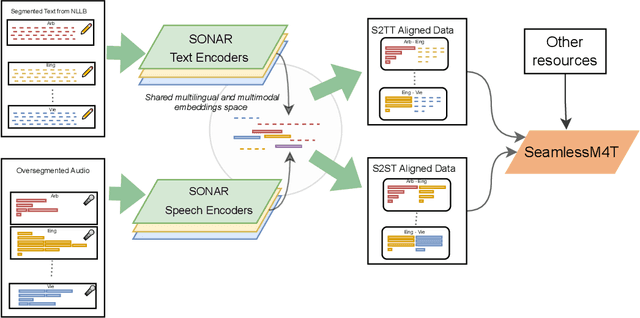
Abstract:What does it take to create the Babel Fish, a tool that can help individuals translate speech between any two languages? While recent breakthroughs in text-based models have pushed machine translation coverage beyond 200 languages, unified speech-to-speech translation models have yet to achieve similar strides. More specifically, conventional speech-to-speech translation systems rely on cascaded systems that perform translation progressively, putting high-performing unified systems out of reach. To address these gaps, we introduce SeamlessM4T, a single model that supports speech-to-speech translation, speech-to-text translation, text-to-speech translation, text-to-text translation, and automatic speech recognition for up to 100 languages. To build this, we used 1 million hours of open speech audio data to learn self-supervised speech representations with w2v-BERT 2.0. Subsequently, we created a multimodal corpus of automatically aligned speech translations. Filtered and combined with human-labeled and pseudo-labeled data, we developed the first multilingual system capable of translating from and into English for both speech and text. On FLEURS, SeamlessM4T sets a new standard for translations into multiple target languages, achieving an improvement of 20% BLEU over the previous SOTA in direct speech-to-text translation. Compared to strong cascaded models, SeamlessM4T improves the quality of into-English translation by 1.3 BLEU points in speech-to-text and by 2.6 ASR-BLEU points in speech-to-speech. Tested for robustness, our system performs better against background noises and speaker variations in speech-to-text tasks compared to the current SOTA model. Critically, we evaluated SeamlessM4T on gender bias and added toxicity to assess translation safety. Finally, all contributions in this work are open-sourced and accessible at https://github.com/facebookresearch/seamless_communication
Multilingual Speech-to-Speech Translation into Multiple Target Languages
Jul 17, 2023Abstract:Speech-to-speech translation (S2ST) enables spoken communication between people talking in different languages. Despite a few studies on multilingual S2ST, their focus is the multilinguality on the source side, i.e., the translation from multiple source languages to one target language. We present the first work on multilingual S2ST supporting multiple target languages. Leveraging recent advance in direct S2ST with speech-to-unit and vocoder, we equip these key components with multilingual capability. Speech-to-masked-unit (S2MU) is the multilingual extension of S2U, which applies masking to units which don't belong to the given target language to reduce the language interference. We also propose multilingual vocoder which is trained with language embedding and the auxiliary loss of language identification. On benchmark translation testsets, our proposed multilingual model shows superior performance than bilingual models in the translation from English into $16$ target languages.
Exploration on HuBERT with Multiple Resolutions
Jun 22, 2023



Abstract:Hidden-unit BERT (HuBERT) is a widely-used self-supervised learning (SSL) model in speech processing. However, we argue that its fixed 20ms resolution for hidden representations would not be optimal for various speech-processing tasks since their attributes (e.g., speaker characteristics and semantics) are based on different time scales. To address this limitation, we propose utilizing HuBERT representations at multiple resolutions for downstream tasks. We explore two approaches, namely the parallel and hierarchical approaches, for integrating HuBERT features with different resolutions. Through experiments, we demonstrate that HuBERT with multiple resolutions outperforms the original model. This highlights the potential of utilizing multiple resolutions in SSL models like HuBERT to capture diverse information from speech signals.
Hybrid Transducer and Attention based Encoder-Decoder Modeling for Speech-to-Text Tasks
May 04, 2023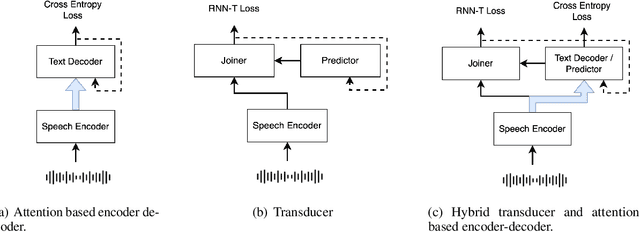

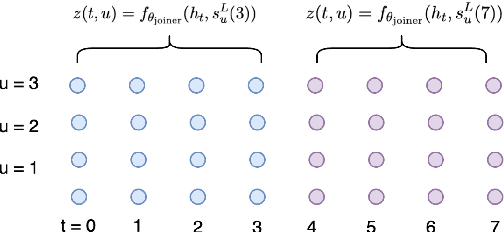
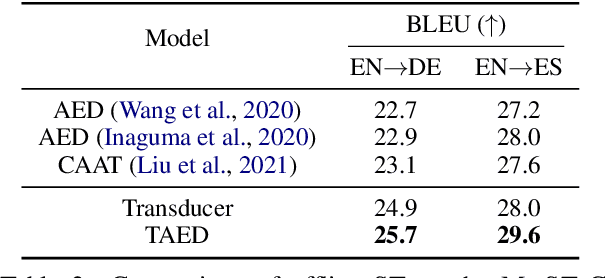
Abstract:Transducer and Attention based Encoder-Decoder (AED) are two widely used frameworks for speech-to-text tasks. They are designed for different purposes and each has its own benefits and drawbacks for speech-to-text tasks. In order to leverage strengths of both modeling methods, we propose a solution by combining Transducer and Attention based Encoder-Decoder (TAED) for speech-to-text tasks. The new method leverages AED's strength in non-monotonic sequence to sequence learning while retaining Transducer's streaming property. In the proposed framework, Transducer and AED share the same speech encoder. The predictor in Transducer is replaced by the decoder in the AED model, and the outputs of the decoder are conditioned on the speech inputs instead of outputs from an unconditioned language model. The proposed solution ensures that the model is optimized by covering all possible read/write scenarios and creates a matched environment for streaming applications. We evaluate the proposed approach on the \textsc{MuST-C} dataset and the findings demonstrate that TAED performs significantly better than Transducer for offline automatic speech recognition (ASR) and speech-to-text translation (ST) tasks. In the streaming case, TAED outperforms Transducer in the ASR task and one ST direction while comparable results are achieved in another translation direction.
ESPnet-ST-v2: Multipurpose Spoken Language Translation Toolkit
Apr 11, 2023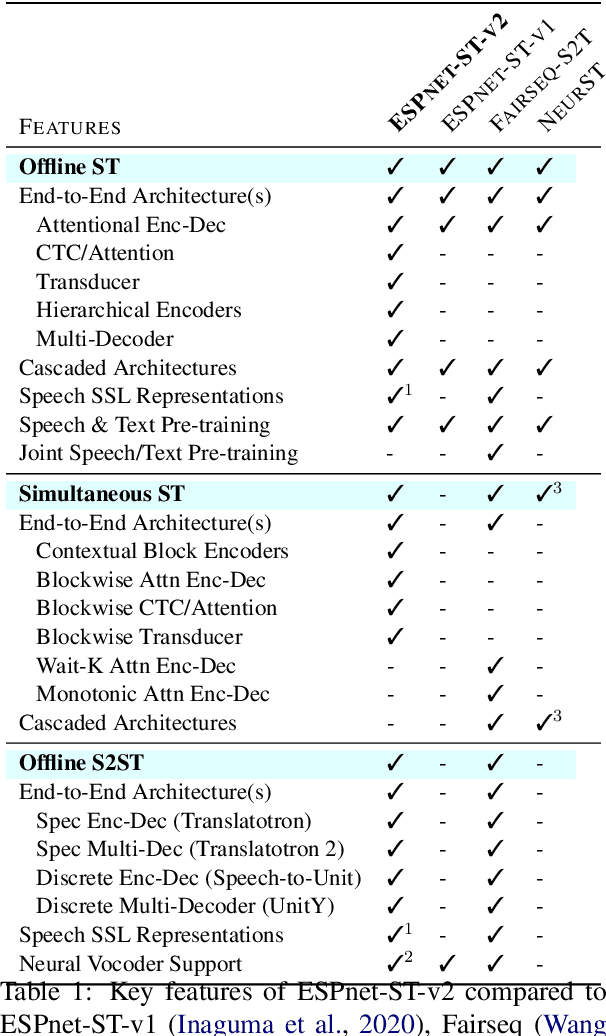
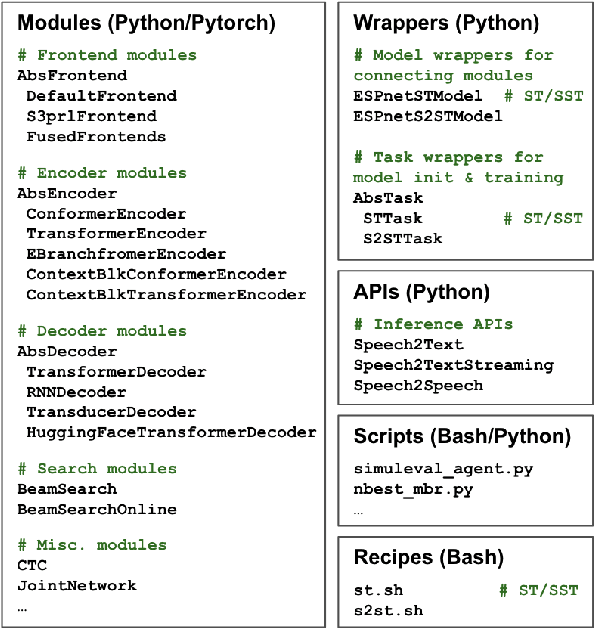
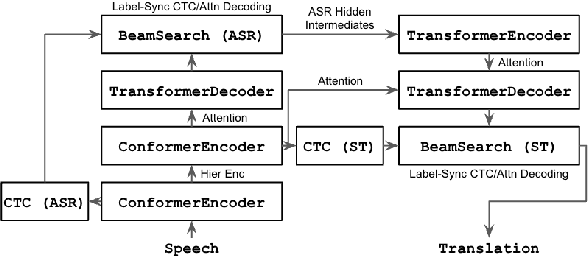
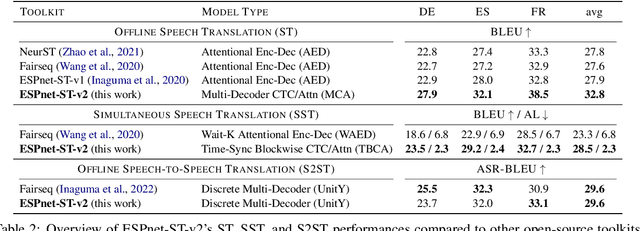
Abstract:ESPnet-ST-v2 is a revamp of the open-source ESPnet-ST toolkit necessitated by the broadening interests of the spoken language translation community. ESPnet-ST-v2 supports 1) offline speech-to-text translation (ST), 2) simultaneous speech-to-text translation (SST), and 3) offline speech-to-speech translation (S2ST) -- each task is supported with a wide variety of approaches, differentiating ESPnet-ST-v2 from other open source spoken language translation toolkits. This toolkit offers state-of-the-art architectures such as transducers, hybrid CTC/attention, multi-decoders with searchable intermediates, time-synchronous blockwise CTC/attention, Translatotron models, and direct discrete unit models. In this paper, we describe the overall design, example models for each task, and performance benchmarking behind ESPnet-ST-v2, which is publicly available at https://github.com/espnet/espnet.
Enhancing Speech-to-Speech Translation with Multiple TTS Targets
Apr 10, 2023



Abstract:It has been known that direct speech-to-speech translation (S2ST) models usually suffer from the data scarcity issue because of the limited existing parallel materials for both source and target speech. Therefore to train a direct S2ST system, previous works usually utilize text-to-speech (TTS) systems to generate samples in the target language by augmenting the data from speech-to-text translation (S2TT). However, there is a limited investigation into how the synthesized target speech would affect the S2ST models. In this work, we analyze the effect of changing synthesized target speech for direct S2ST models. We find that simply combining the target speech from different TTS systems can potentially improve the S2ST performances. Following that, we also propose a multi-task framework that jointly optimizes the S2ST system with multiple targets from different TTS systems. Extensive experiments demonstrate that our proposed framework achieves consistent improvements (2.8 BLEU) over the baselines on the Fisher Spanish-English dataset.
 Add to Chrome
Add to Chrome Add to Firefox
Add to Firefox Add to Edge
Add to Edge